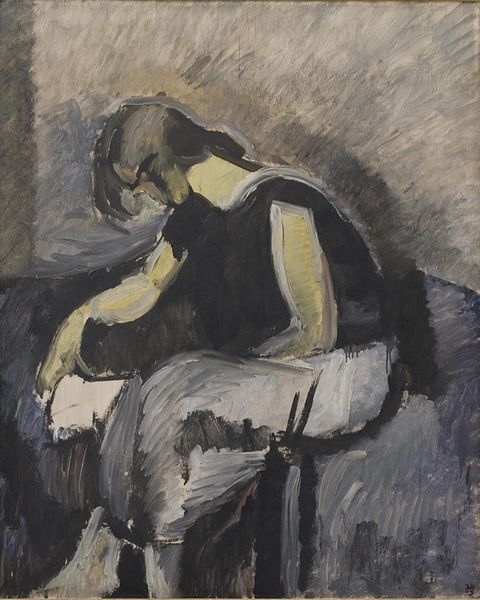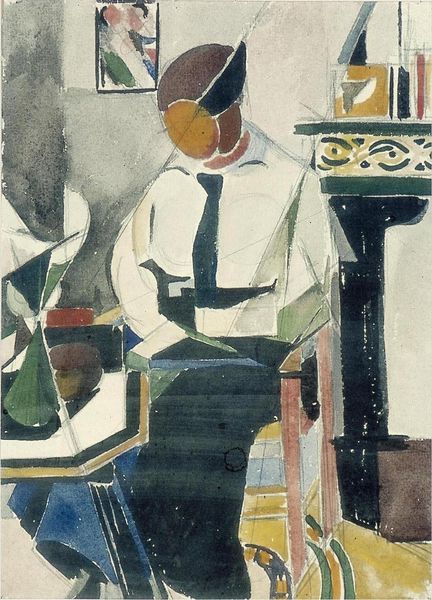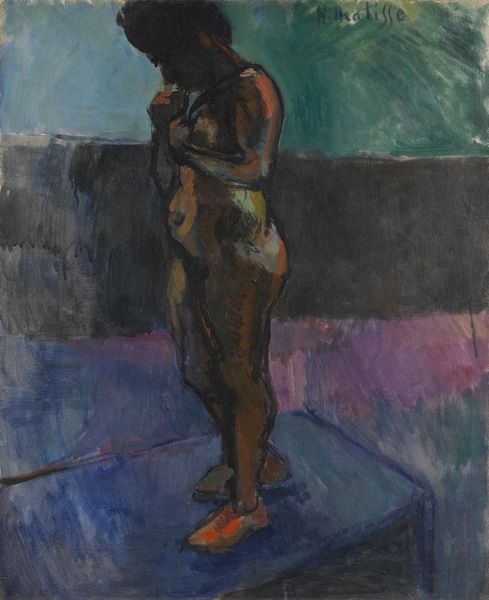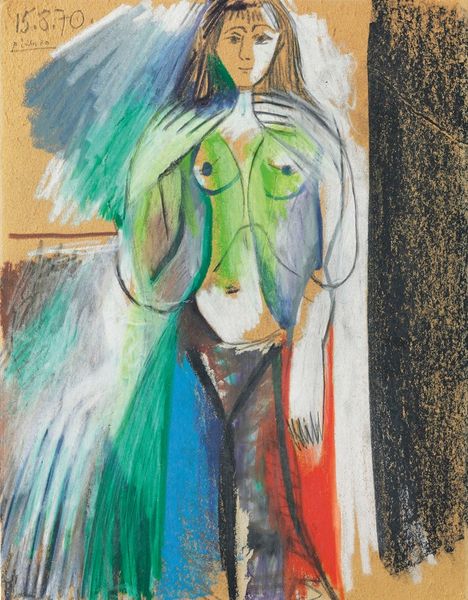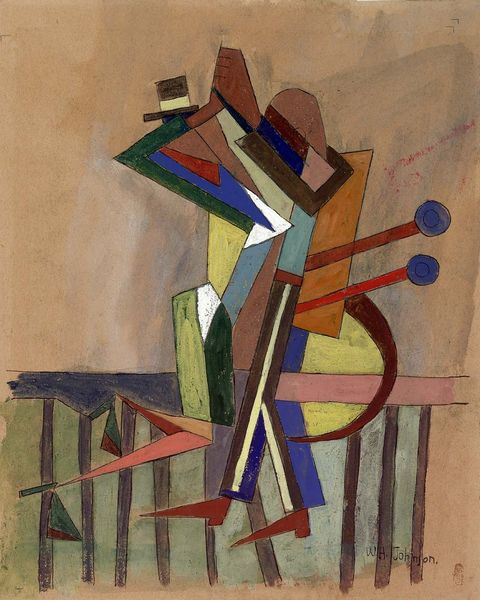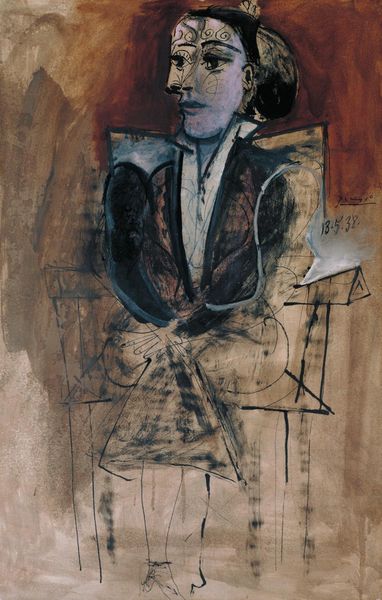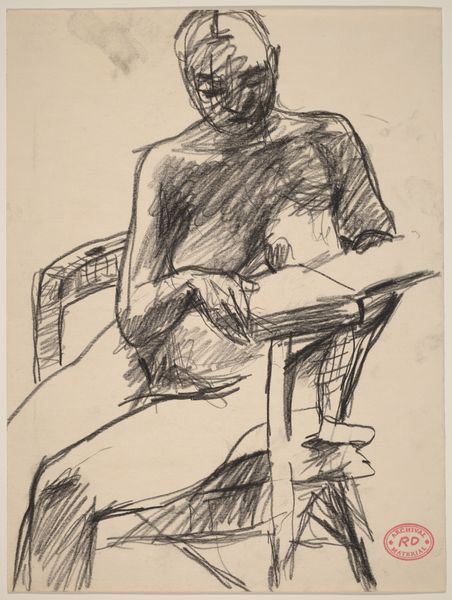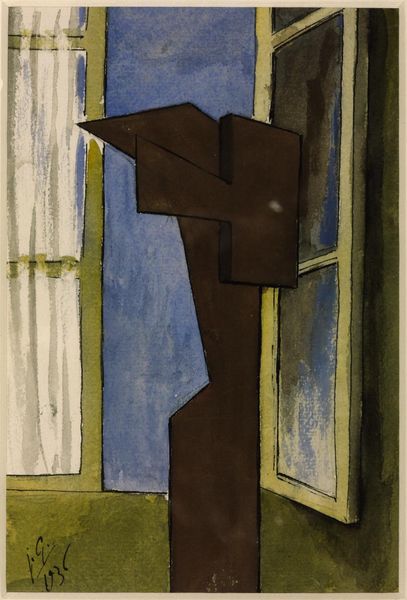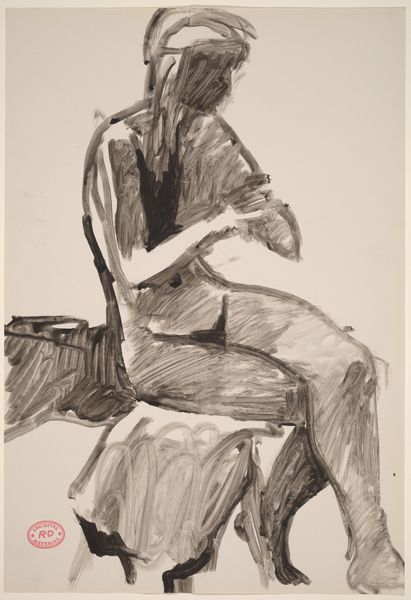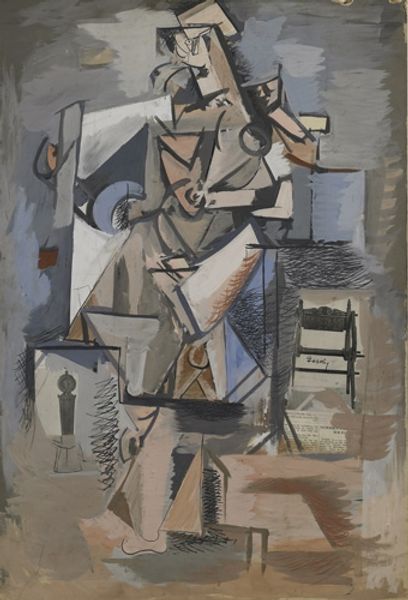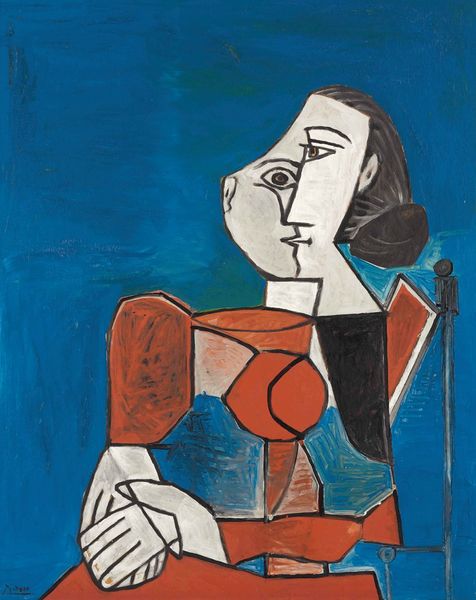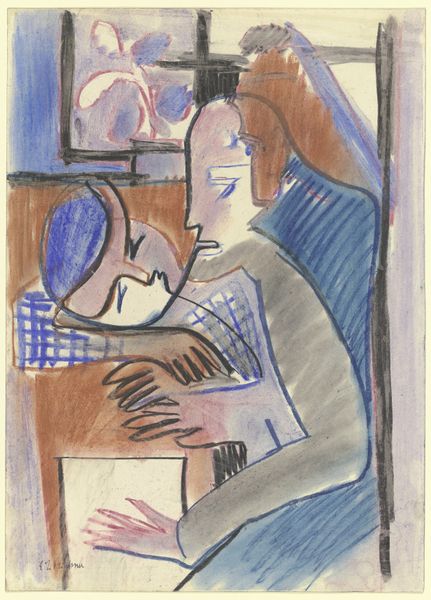
Copyright: Public domain US
Curator: Henri Matisse’s 1914 painting, “Woman on a High Stool,” certainly makes one pause. It's painted with oil on canvas. Editor: It's…melancholy. A pervasive gloom seems to emanate from the grey tonalities. The woman appears almost lost within the composition, perched precariously, almost camouflaged by the muted palette. Curator: Note how Matisse employs line and color to flatten the picture plane, defying traditional perspective. This strategic approach creates a visual tension. The composition is also very carefully arranged with attention to shapes. The shapes are simplified almost to geometric form, this suggests perhaps, some influence of early Cubism in his approach. Editor: You are spot on. The painting hints at some kind of isolation, which I read in relation to the First World War, don’t you think? The somber palette perhaps reflecting the general mood during that era. What’s your opinion of the subject herself, in this environment? Curator: She embodies an air of dignified resignation. Observe her hands; their posture is deliberately arranged to evoke thought. And the stark geometry of the chair itself - what could be a mundane object turns almost sculptural in form. The chair provides context in the painting and is of no coincidence or happenstance. Editor: Absolutely. It elevates the everyday into something… monumental. The interplay between the flattened space and the almost totemic quality of the figure invites one to think about how society viewed women, even immortalised in the paintings. The social standing of women might not be considered the first topic to consider when looking at this piece, however, given his previous artistic choices it is no doubt that the intent was intentional. Curator: This painting represents a critical juncture in Matisse’s practice, where the interplay of abstraction and representation are perfectly interwoven. It’s also nice when we read such clear, albeit bleak, contextual signs, through a work’s pictorial components. Editor: Indeed. A poignant meditation on form, emotion, and the anxieties of its time.
Comments
No comments
Be the first to comment and join the conversation on the ultimate creative platform.
